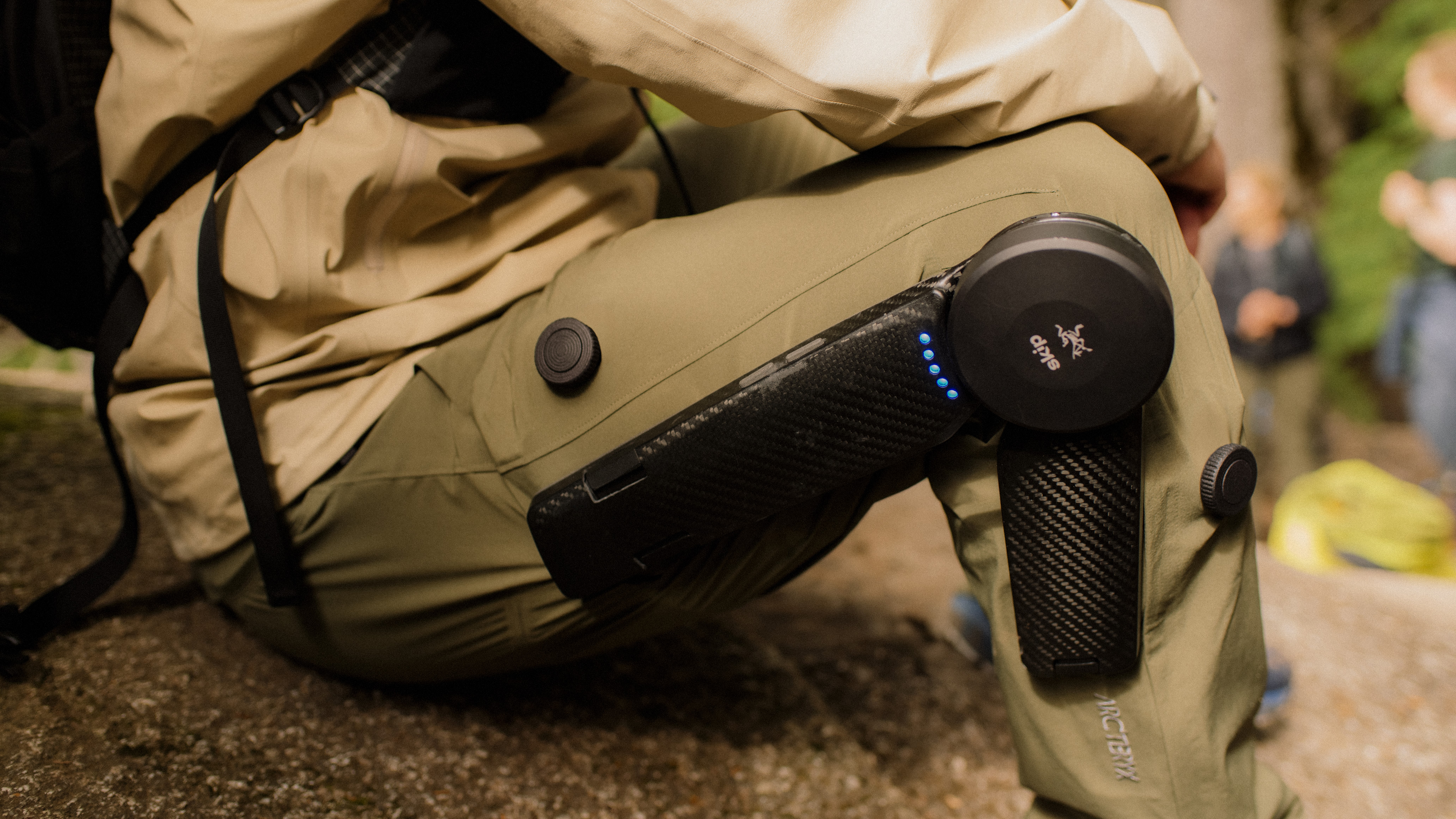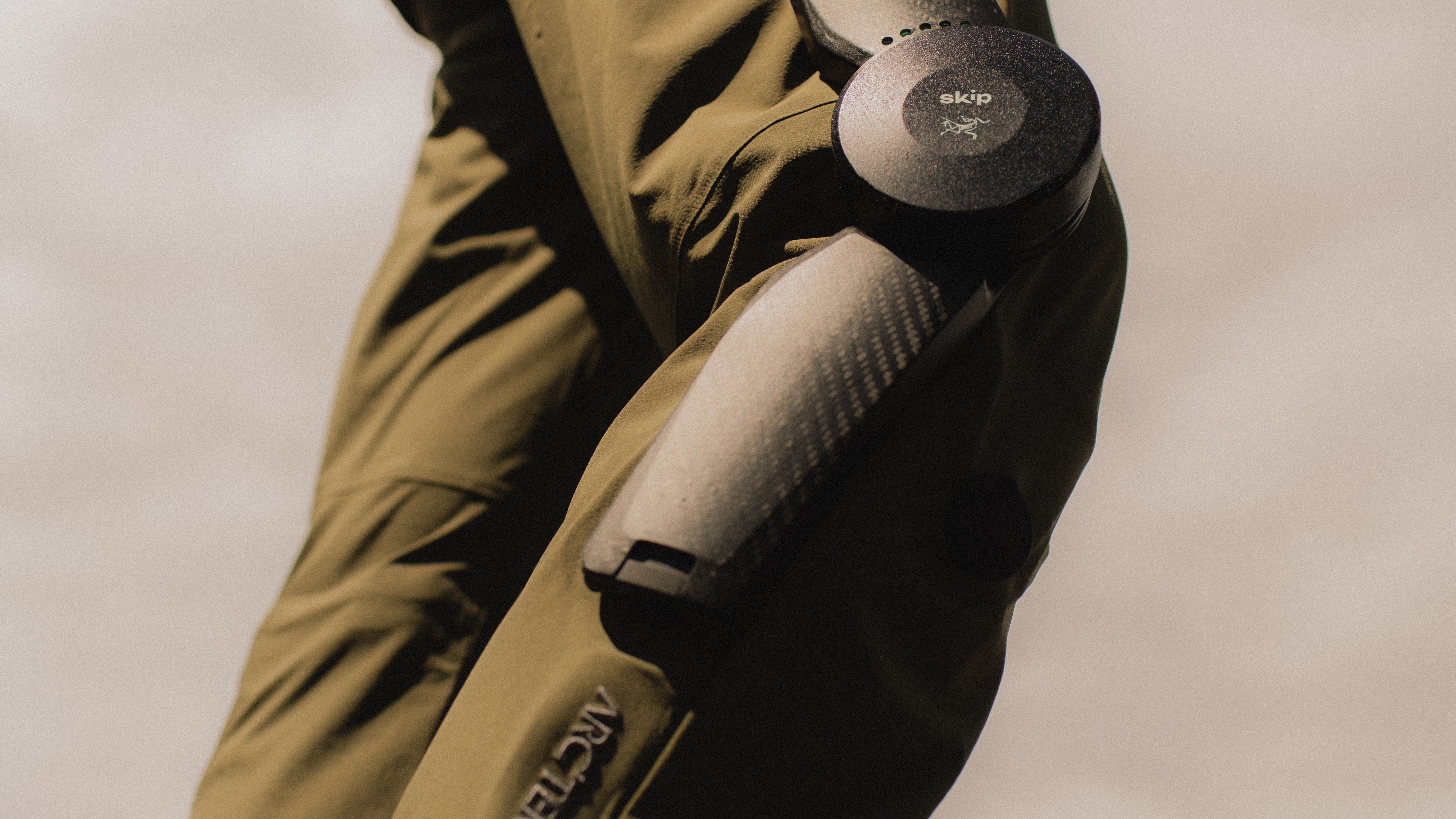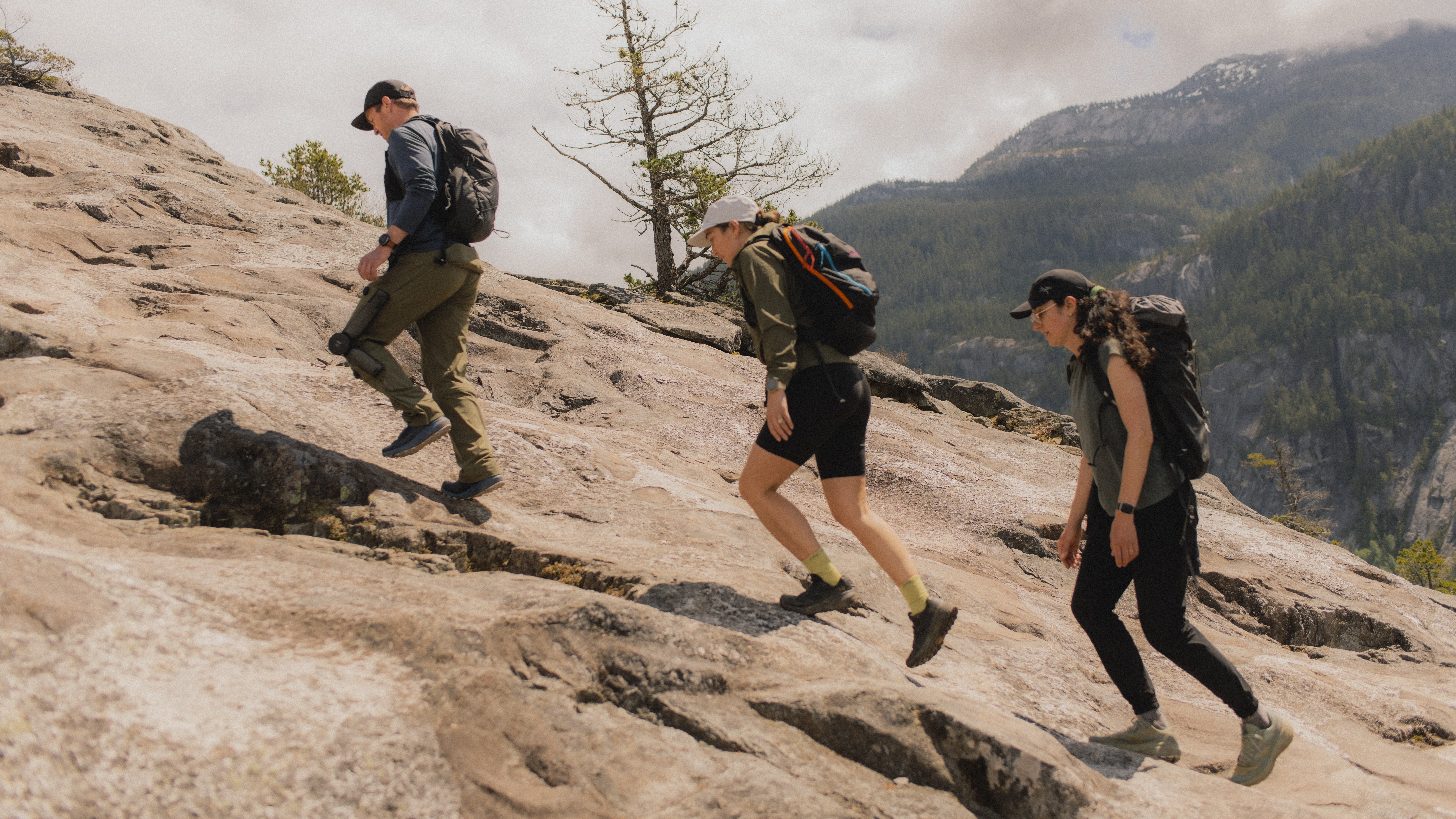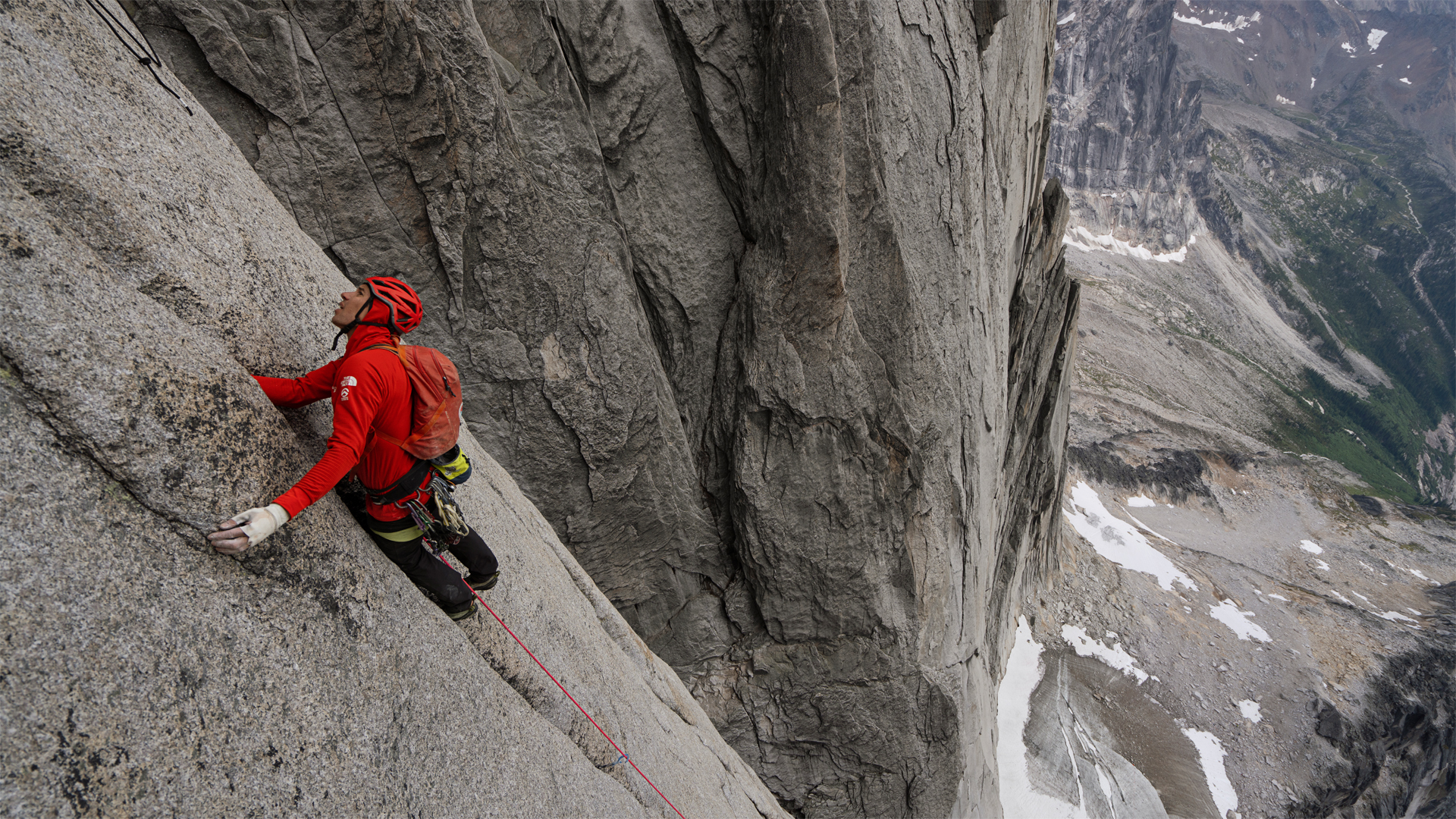No, the new Arc'teryx exoskeleton pants aren’t just a hack for lazy hikers – but they could make the outdoors more equitable
We speak to a representative from Arc’teryx to find out just who these futuristic hiking pants are intended for

“Oh God,” I groaned to myself as I opened the news story about a new pair of exoskeleton hiking pants designed to “power” people uphill. We’ve already got folk using helium balloons to carry their backpacks uphill – do we really need external muscles too? What’s next, escalators up the mountain?
On second look, however, I realized that this particular product was a collaboration between a mobility technology company named Skip and the renowned outdoor brand Arc’teryx. I’ve spent a fair amount of time with Arc’teryx in recent years, at their Alpine Academy in Chamonix and more recently their Climb Academy in the Lake District, and I’m pretty sure they’re not in the business of helping people slack off when they’re in the mountains. Gear I've tested like their Beta Jacket is generally extremely high quality – albeit expensive – and technical. It’s designed for serious explorers, even if you just want to wear it around town.
After a breathless CNN article titled “Are these exoskeleton pants the hiking clothing of the future?” I decided to approach Arc’teryx myself to find out what these futuristic hiking pants are – and who they’re actually meant for.

What are the MO/GO exoskeleton pants from Arc’teryx?
In the words of Cam Stuart, Manager of Research and Engineering at Arc’teryx Advanced Concepts, the MO/GO exoskeleton pants are “a wearable powered hike assist which supports users in getting out into the mountains they love.”
“Named after the Mountain Goat - one of the world’s best climbers that tend to gather in some of the most scenic, hardest-to-reach places – it enables users to tackle elevation like never before by providing a boost to the leg muscles on the way up.”
What do they look like? A pair of hiking pants that have carbon fiber wearable technology integrated into the outer shell that, according to the two brands, gives you a boost on the uphill by relieving up to 40 percent of your effort. In addition, they reportedly make you feel up to 30 lbs lighter – you know, how you feel when you get to the end of a long day on the trail and drop your heavy backpack on the ground.
On the downhill, they’re designed to support your knees. To the naked eye, it basically just looks like you’re wearing two leg braces over your regular hiking pants.
Advnture Newsletter
All the latest inspiration, tips and guides to help you plan your next Advnture!
“Through this support, users will be able to go further, for longer, with reduced fatigue or discomfort," says Stuart.
The technology consists of a motorized wheel next to your outer knee that spins or turns as you move, triggering the boost when needed. To keep it working, a power pack sits at the belt line just at your lower back which fuels these pants for up to three hours at a time.
I should note here that this isn’t the only exoskeleton technology to be making headlines – we’ve already reported on two other exoskeleton launches so far this year (one from Hypershell, one from Dnsys). What’s different about these is that the technology is integrated into a pair of hiking pants.

Who can benefit from this innovation?
So are exoskeleton pants like these really just to make hiking easier? While there’s nothing to stop a healthy person from using a pair to hike their next 14er, assuming you have a lot of money and don’t want to use your leg muscles, they’re really intended for people with mobility issues who want to get – or stay – active outdoors.
“Skip’s co-founders watched members of their family experience mobility challenges, and saw the direct link between their ability to move the way they wanted on a given day and literally every other aspect of their life – mental health, motivation, social connection,” explains Stuart.
“MO/GO is designed for anyone who suffers from mobility challenges which limit their ability to move in the mountains.”
This could be due to aging, fatigue or injury, and Stuart adds that he thinks the innovation is “an exciting step forward in creating more equitable access to the mountains.”
Personally, I can easily get my head around this as I spent a couple of years unable to hike or even walk properly after a knee surgery gone wrong. I also have parents in their late 60s and early 70s who recently got e-bikes and are suddenly rediscovering mountainous regions of Spain they haven’t seen in years. It’s brought them a whole new level of joy which I can only hope is as good for their health as the actual cycling.
Preliminary tests seem to be positive, too. Jason Ahn has a knee injury and was invited to try the MO/GOs out after being unable to hike for the past five years.
“After wearing these pants, it’s very life-changing actually. I don’t feel any pain in my knees, I don’t feel anything, my knees are good,” he says.
“To have something like this and just know that you can return to doing what you love is pretty powerful,” agrees another tester, Connor Hendry, while Trish Cizek says it has given her “the confidence to participate in more challenging hikes.”
Though it's early for this technology, studies have already been performed on how they improve user walking and running economy and there's a wealth of scientific data that backs up any effort to get more people moving outdoors, known as green exercise.

How will people be able to access this technology?
Based on testimonials, the MO/GO is a persuasive prospect when it comes to getting people with mobility issues up mountains – as long as you don’t want to hike for more than three hours anyway. But in addition to the time limit, there is another major drawback, and that is the price.
The MO/GO, which is currently available for pre-order only, is priced at $4,500 and while that will certainly make your eyes water if you’re just an avid hiker looking for new gear, it’s important to remember that this isn’t just hiking gear. It’s medical technology and perhaps could make the outdoors just a little more equitable.
Julia Clarke is a staff writer for Advnture.com and the author of the book Restorative Yoga for Beginners. She loves to explore mountains on foot, bike, skis and belay and then recover on the the yoga mat. Julia graduated with a degree in journalism in 2004 and spent eight years working as a radio presenter in Kansas City, Vermont, Boston and New York City before discovering the joys of the Rocky Mountains. She then detoured west to Colorado and enjoyed 11 years teaching yoga in Vail before returning to her hometown of Glasgow, Scotland in 2020 to focus on family and writing.

